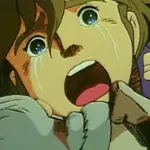At this year's 73rd Berlin International Film Festival, 8-year-old actress Sofía Otero won the Silver Bear Award for Best Actress with '20,000 Species of Bees,' becoming the youngest recipient of this prestigious award in Berlinale history. The film also received a nomination for the Golden Bear for Best Film and marks the directorial debut of Estibaliz Urresola Solaguren.
What sets apart this newcomer actress and director's '20,000 Species of Bees' amidst a sea of other films?

I think that '20,000 Species of Bees' explores the complexity of gender from a child's perspective.
Beforehand, there have been remarkable works delving into self-gender identity. Films like Eddie Redmayne's 'The Danish Girl' focused on the first transgender woman to undergo gender and sexual orientation transition.

There's “Girl,” an LGBT film from 2019, that tells the story of a boy aspiring to learn ballet and become a girl.

Then there's “Veneno,” a biographical film about Cristina Ortíz, Spain's most famous transgender television personality and an LGBT icon from the 90s.

However, '20,000 Species of Bees' chooses to view gender from the perspective of innocence, from a child's point of view when society's inherent gender binary hasn't yet imposed itself on children. What does gender mean when it hasn't been forcibly impressed upon children, and how do they shape their own gender identities? As parents, how should they guide them?

Aitor (played by Sofía Otero) is a young boy with long hair, painted nails, and a delicate appearance. During the summer, his mother Ane (Patricia López Arnaiz) takes him and his siblings back to their family home, closely tied to the beekeeping industry. Throughout the journey, Aitor is repeatedly mistaken for a girl by neighbors and villagers. His grandmother explains that he's a boy, but Aitor enjoys being mistaken for a girl. As more and more people misunderstand, his grandmother suggests cutting his long hair, but Aitor firmly opposes it.

One day, the children plan to go swimming, and Aitor once again shows reluctance, only willing to go if his mother Ane joins him. After finally entering the swimming pool, Aitor refuses to take off his coat and go into the water. He tries to chat with a group of girls to pass the time and introduces himself as "Coco."

When it's time to leave, Aitor follows Ane into the women's changing room. Due to limited space, Ane takes Aitor and her cousin into a restroom stall. Aitor's cousin, wearing a pink one-piece swimsuit, curiously asks, “Why is he sitting to pee?”
"Boys can also sit to pee."
"So, Coco isn't a girl?"
"He's not Coco; his name is Aitor."
"Then why is he in the women's changing room?"

The conversation between Aitor's cousin and mother embarrasses Aitor profoundly. He doesn't want to admit he's a boy, doesn't want to acknowledge his name as Aitor, and doesn't want his mother to reveal his lie in front of others. Thankfully, Aitor's aunt understands him. She takes him to collect beeswax and tells him stories about bees. When bees swarm around Aitor, he says he feels like a "scared girl." Using the analogy of worker bees and the queen bee, Aitor's aunt probes his gender identity, and indeed, he identifies himself as the queen bee while regarding his father and brother as worker bees. His aunt comprehends everything.

Aitor chooses a real girl's name for himself: Lucía. While taking a bath, Aitor collects two big bubbles and places them on his chest, childishly imitating female breasts. When his aunt brings several bags of girl's clothing for his sister, Aitor is excited and stares at the pretty clothes.


As summer vacation nears its end, Aitor's father joins the family gathering. Aitor insists on wearing a pink dress, leading to a heated argument where his father berates Ane for her leniency. Aitor eventually changes back into the boy's clothing and walks alone in the meadow where the beehives are kept. As everyone begins to call out for Aitor, from cries of "Aitor" to his brother shouting "Lucía," and finally, his mother calling "Lucía." Lucía's existence gains official recognition from his family.

When a young boy doesn't yet embody societal notions of male characteristics, choosing to keep long hair and wear dresses, he's labeled as a girl. Aitor is allowed to use female symbols because of these characteristics, and his father's outburst signifies that, in the existing patriarchal society, wearing a dress does not allow for someone with Aitor's innate male identity. Is the problem with the dress itself, or with the dress being a symbol traditionally associated with females? Does Aitor identify as a girl because he enjoys keeping long hair and wearing dresses, or does he think these are things only girls can do?

So, does Aitor enjoy having long hair and wearing dresses, or does he enjoy being a girl? This is a serious topic that deserves contemplation. Perhaps by detaching gender symbols of gender itself, we can understand the true Aitor. Nevertheless, mainstream thought still adheres to traditional gender binary notions, mechanically pairing girls with dresses and boys with pants.

But there are 20,000 species of bees, so we should have more diverse exteriors too. From another perspective, in today's era of diverse thinking, as we support gender fluidity and oppose the gender binary, we must ensure that this doesn't become another fashion statement after feminism. Is gender something constructed or generated after birth?
As parents, how do we determine if our children genuinely have gender dysphoria or if they simply find using gender-fluid language to be trendy? This is also a question worth pondering.

In summary, young actress Sofía Otero's on-screen portrayal is incredibly natura; her innate acting talent will surely move you throughout the film. “20,000 Species of Bees” not only delicately presents us with children's gender identity from a unique perspective, but also provokes discussions and reflections on societal systems and existing gender symbols.








Share your thoughts!
Be the first to start the conversation.